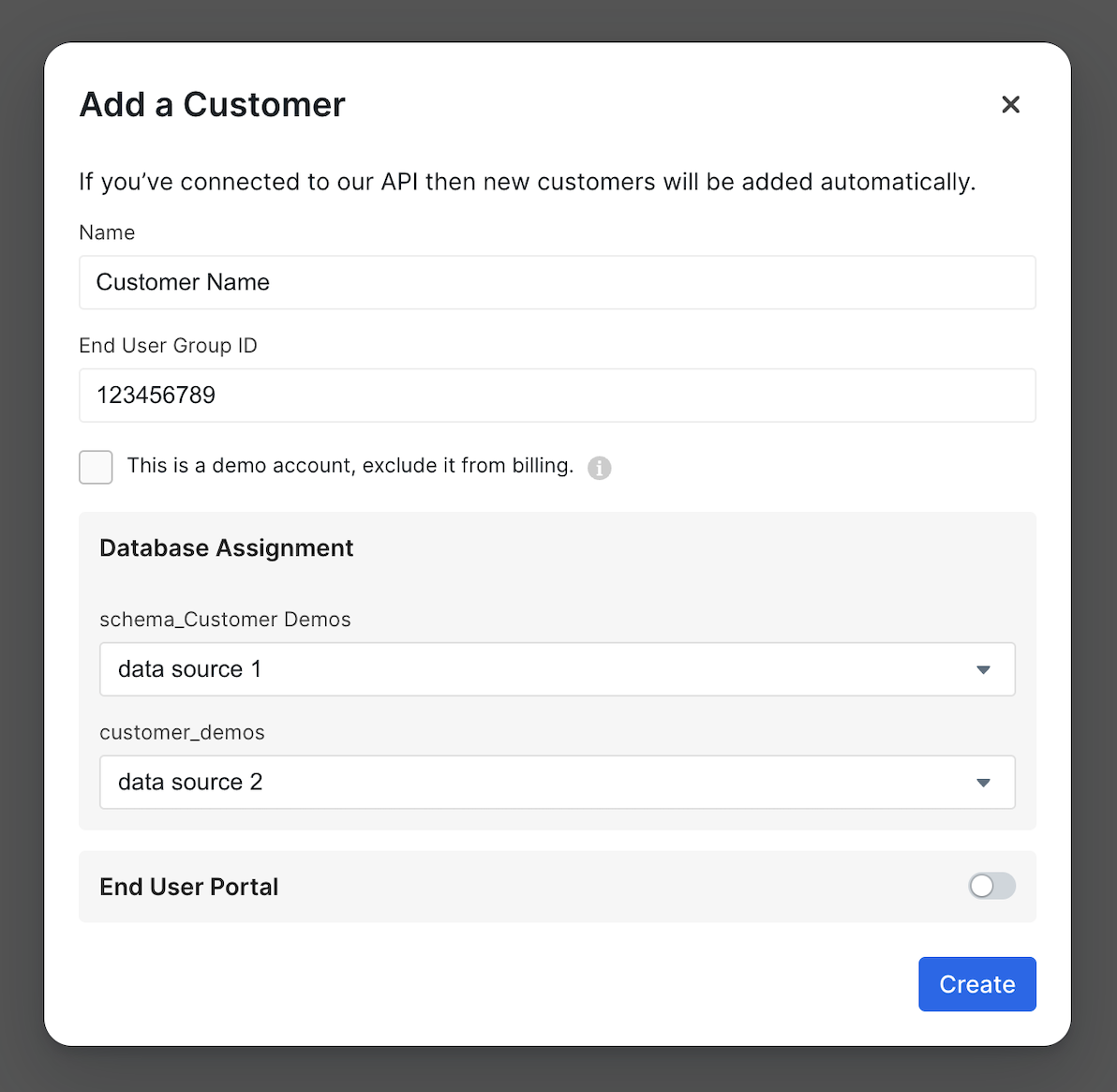Skip to main contentUse Data Visibility Groups to control what data can be accessed via our API and to split
out your data by groups such as testing and production. A data visibility group consists
of API tokens, data sources, and customers. Each API token can be
configured to have either read-write or read-only permissions to our API.
When one of your team members uses that API token to access your data, Explo
will only send the data sources and customers associated with that token’s
data visibility group. If someone tries to create a new customer via the API, they
will only be able to associate that customer with data sources also linked
to their token.
Real-World Example
You might want to create a “Testing” data visibility group for your developers. This
group would have one API token with read-write permissions and would be
associated with any of the customers or data sources that you’ve created
for the purposes of testing your dashboards.
Now, anyone using the “Testing” API token would be able to test embedding Explo
dashboards without seeing any production data. Because the token is read-write,
they’d be able to create new customers to test with, but those new customers
would also only be able to use your “testing” data.
Managing Data Visibility Groups
To manage your data visibility groups, go to the Data Visibility Groups section of the settings
page. From there, you have the ability to create and delete data visibility groups, add,
modify, or delete API tokens, and update the data sources associated with each.
 For each schema, you can choose one data source to be the default for your
data visibility group and any number of other data sources to also belong to that data visibility
group. Note that one data source can belong to multiple data visibility groups if you
require that. Defaults can be configured in the manage schemas modal on the data sources page.
For each schema, you can choose one data source to be the default for your
data visibility group and any number of other data sources to also belong to that data visibility
group. Note that one data source can belong to multiple data visibility groups if you
require that. Defaults can be configured in the manage schemas modal on the data sources page.

Updating customer Visibility
Data Visibility Groups and their association with customers can be managed from the
customer modal. Note that an customer can only be associated with
one data visibility group at a time.



